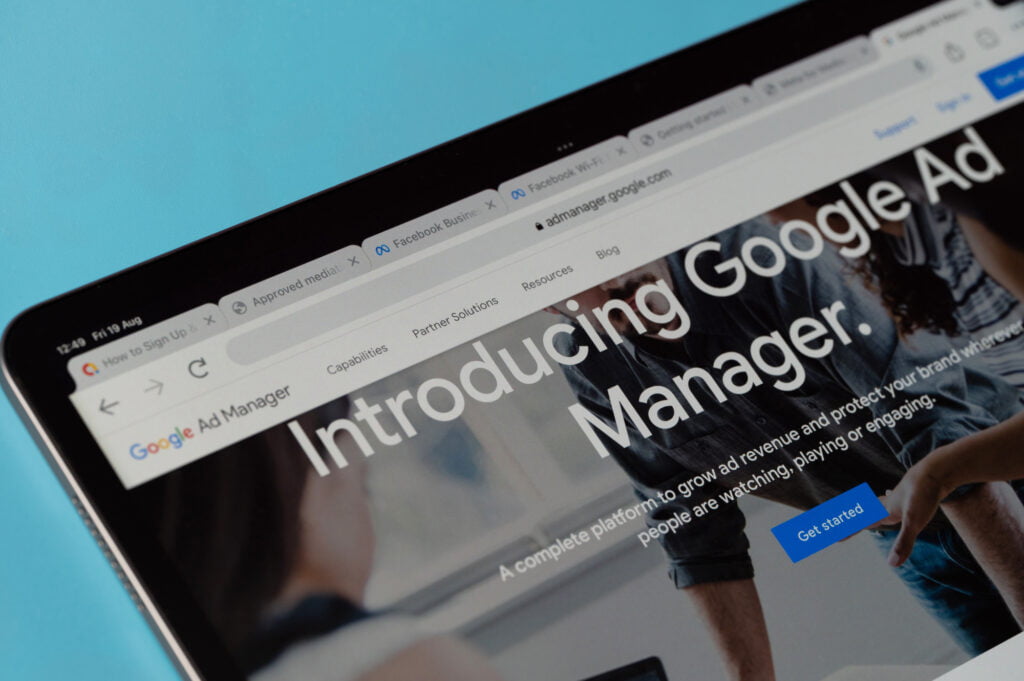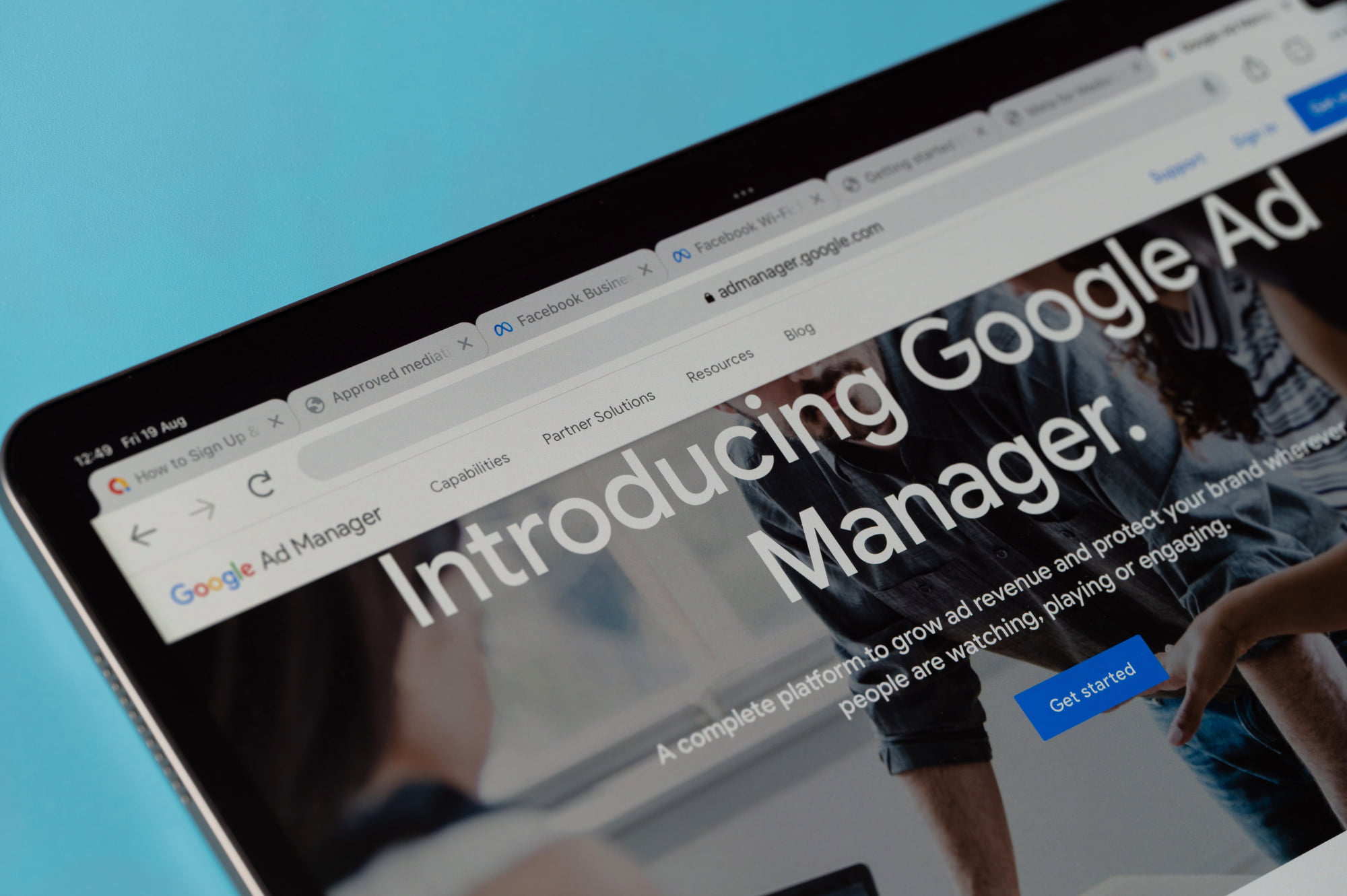Advertising products or services online is an excellent step to boosting your business. To achieve such an end, you can use Google Ads, also known by terms such as Google AdSense, AdWords, or Ads.
That said, setting up Google Ads isn’t enough. You must also learn how to manage and maintain its execution. Continue reading if you want to know more about managing Google ads and how to use it to skyrocket your business’s revenue.

What Is Google Ads Manager?
Google Ads Manager is an advanced and extensive ad management platform that gives advertisers and publishers every feature that will help them sell and handle advertising inventory. Professionals, such as Jarrett Digital, can greatly help businesses like yours manage your Google Ads Manager to promote your products or services.
Google Ads Manager allows businesses to manage and serve ads on their websites, mobile apps, and video content. Advertisers can use Google Ads Manager to target specific audiences and optimize their ad campaigns for better performance. This platform provides an array of features that can help businesses reach their desired audience and achieve their advertising goals.
Benefits Of Using Google Ads Manager
There are many benefits to using Google Ads Manager. Thus, it makes sense that it can be an effective tool to improve your business in many ways. Without further ado, here are some of those benefits:
- Leads To Positive Outcomes Regardless Of The Money Spent
You can have sufficient control over the advertising budget that your business invested in using Google Ads Manager. For one, you’ll only spend money whenever there are ad clicks. Laying out daily or monthly spending limits is also possible. This way, you can keep your budget on the right path and boost your return on investment (ROI).
- Helps Your Business To Grow Effectively
Another benefit of using Google Ads Manager is that it helps your business to grow. You can cost-effectively achieve such an end by reaching more market audiences. As more people use Google to find new information, you can use Google Ads Manager to turn those people into leads. This results in having more chances for business development and scaling.
- Provides Thorough Analysis And Overview
With Google Ads Manager, you’ll gain more information on the ads campaign’s status. This data can be a basis for creating more effective ads and targeting the right audience. Thus, you can expect a more favorable result.
Another benefit of using Google Ads Manager is improving your business’s sales. Continue reading on the ways to use such a platform for sales.
How To Skyrocket Your Revenue With Effective Google Ads Management
With millions of online searches conducted on Google each day, it’s evident that advertising on Google Ads can greatly help your business. It has become a powerful tool for reaching potential customers and driving sales. However, simply creating ads and launching campaigns is not enough.
Effective Google Ads management is essential for businesses looking to maximize their return on investment and achieve their advertising goals. Here are some strategies on how effective Google Ads can help boost your bottom line.
- Assess The Most Recent Google Ad Performance
To effectively increase revenue through Google Ads Manager, you must first consider the state of your ad performance and know what makes it effective and vice versa. Here are three examples of metrics that you can use to assess whether your Google ads are working correctly:
- Impressions: An impression happens when your audience sees your ads on Google. If you want to increase your impressions, the best step is to have more campaign budget. This makes your ads more visible by ranking them higher on Google. Yet, even if the budget can be ideal, ad relevance and quality help more in meeting the right number of impressions.
- Click-Through Rate: Click-through rate (CTR) is the number of people who’ve clicked on your ad after seeing it online. The ideal CTR that you should aim for happens when there is more ad visibility and conversions.
- Conversions: This is the desired action that your audience takes after clicking your ads. Examples of conversions are when a person buys your products or subscribes to your email newsletter after seeing your Google ads.
Ultimately, these metrics can be your guide on whether you need to adjust your ad campaigns.
- Split Test Your Ad Copy
Split testing your ad copy involves launching two ads simultaneously to know which leads to more conversions. With this test, you can automate the ad campaign and equate other variables, such as the kind of devices that affects ad performance. This allows the split test to measure and compare ad performance through the ad copy.
If you’re tracking the clicks, leads, purchases, and click-through rate, this process helps you find the best way to maximize your budget and attain such metrics. Likewise, here are three examples of the steps to take whenever you split-test your ads:
- Generate a name for the test which you’ll have to state the ad group name and the test’s description.
- Test ad groups that receive a higher number of impressions every week. This vital step can improve the ads that already produce positive outcomes. If you want to start with this, you can compute the weekly impressions of an ad group to determine which to split test.
- Avoid changing the ads that are part of the split test whenever the test is already operating. This way, you can see more actual results.
In the end, split tests provide valuable information and understanding of your ad campaigns. This increases the likelihood of someone turning into a customer in the future through effective ads.
- Consider Automated Bidding
One way to manage your Google Ads is to switch to automated bidding. This Google Ads bid strategy involves maximizing results depending on the campaign goals you lay out in the Google Ads Manager platform. With this type of bidding, Google automatically lays the bid amounts built upon the chance that your ad will lead to conversions or clicks.
Additionally, automated bidding allows the bid strategies to be conducted on a campaign level only. This allows every ad group within the campaign to have a similar bid strategy. Yet, when you set different campaigns, that’s only when the strategies will vary. Likewise, it’s also possible that you can develop the campaign strategy within an account level and implement it in various ad campaigns.
To Sum Up
Google ads manager is a great way to advertise products or services. Three ways that this platform helps with sales are that you can split test ads, examine Google Ads performance, and automate the ad bidding strategy. Ultimately, this leads to effective ad campaigns that can increase your sales.
